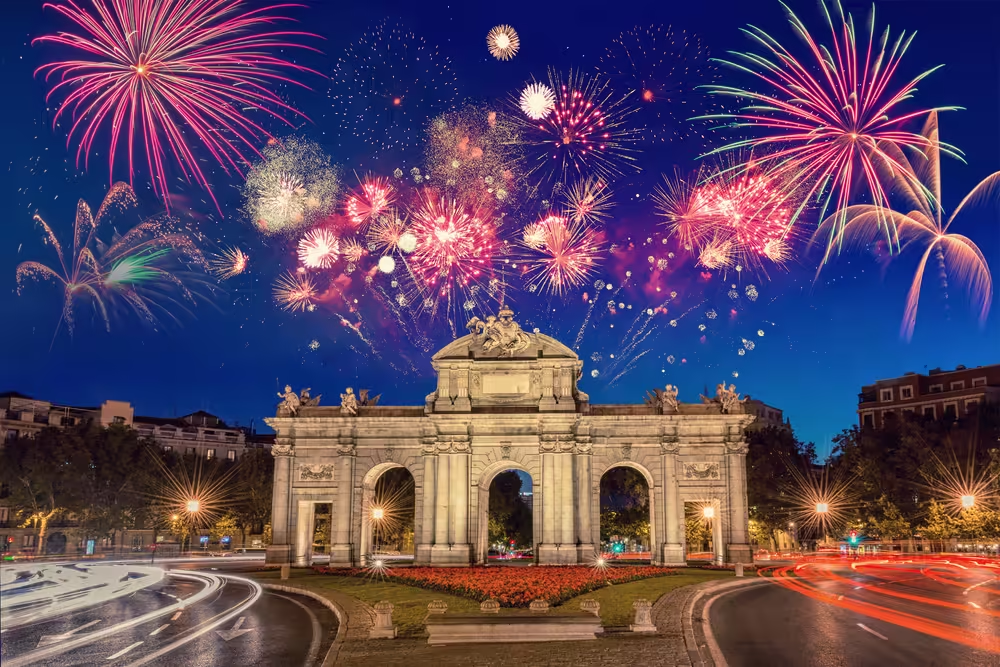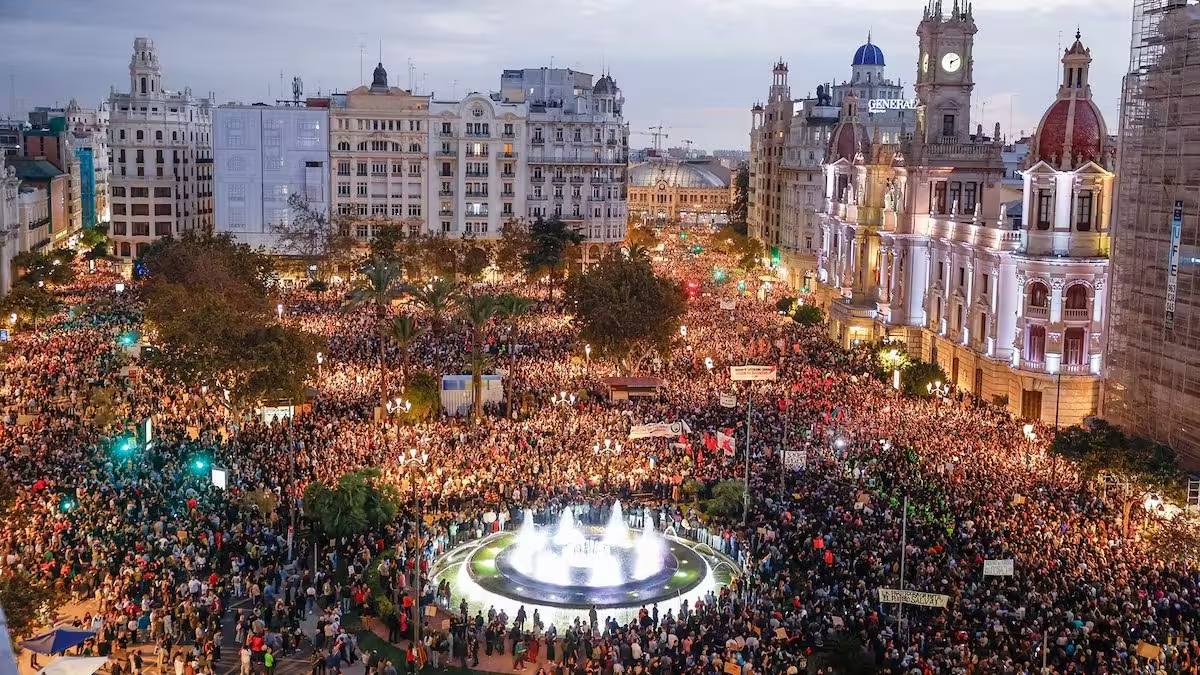New Year’s Traditions in Spain
Spain’s New Year’s Eve, or Nochevieja (meaning ‘Old Night’), is full of traditions that combine food, fun, and superstition to kick off the year. These customs, many with roots in Spain’s history and culture, add meaning and excitement to the celebrations, whether you’re celebrating in a city square like Puerta de Sol or at home with family.
The Twelve Grapes of Luck
As the clock strikes midnight, people eat twelve grapes, one for each chime of the bell. This practice, called las doce uvas de la suerte (the twelve grapes of luck), is believed to bring good fortune for the year ahead. The tradition began in the early 20th century, reportedly as a marketing move by grape farmers in Alicante who had a surplus harvest. The goal is to eat each grape in time with the bell’s chimes, which is easier said than done, but part of the fun! Sometimes kids eat sweets like Smarties or Lacasitos instead.
Red Underwear for Love and Passion
Wearing red underwear on New Year’s Eve in Spain is a tradition linked to attracting love and passion. This custom dates back to ancient times when red symbolized life and energy. Over the years, it evolved into a playful superstition. For the tradition to work, the underwear should be gifted by someone else. It’s a lighthearted way to add a romantic touch to the night.
A Bowl of Lentils for Prosperity
On New Year’s Day in Spain, eating a bowl of lentils is thought to bring prosperity. The lentils symbolize wealth and abundance, a belief that dates back to ancient Roman times when lentils were given as a gift to wish for prosperity. Some people also carry a few lentils in their pockets for extra luck. It’s also a comforting meal to start the year!
Walking with a Suitcase for Travel
If you’re hoping to travel in the new year, take an empty suitcase and walk around your home or the block. This symbolic act is believed to encourage opportunities for travel. This tradition is especially popular in Latin American countries but has also gained traction in Spain, reflecting the shared cultural influences.
Toasting with Cava and Gold
At midnight, people toast with glasses of cava (Spanish sparkling wine). Some add a gold item, like a ring, to the glass, which is thought to bring wealth and success. This tradition has roots in old European customs of using precious metals in rituals to attract prosperity. Just be careful not to swallow the gold!
Cleaning and Decluttering
This is not a custom that is necessarily unique to Spain but some families start the year by cleaning their homes. This is seen as a way to get rid of negative energy and make room for new opportunities. The practice reflects an ancient belief in purification rituals to welcome new beginnings with a clean slate.
Fireworks and Celebrations
From Madrid’s Puerta del Sol to Barcelona’s beaches, public squares light up with fireworks and music. This tradition of celebrating with fireworks has its origins in ancient practices of using loud noises and fire to ward off evil spirits and start the year fresh. Many families stay up late, enjoying traditional treats like turrón (a type of nougat) or roscón de Reyes (a ring-shaped cake) with their cava.
Do you have a favorite New Year’s tradition in Spain? Are you planning to try something new this year? Share your celebrations with us on social media by tagging us or leaving a comment. We’d love to hear how you’re welcoming 2025!
Share this content:




5 comments